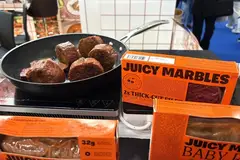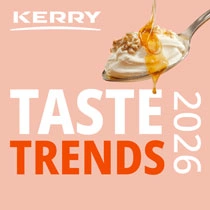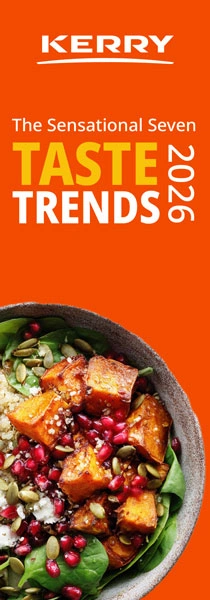IFT First 2025: Naturality, color reformulation and clean label take center stage amid regulatory overhauls
At the recently concluded IFT First 2025 (July 14–16) in Chicago, US, over 17,000 attendees from more than 90 countries visited over 1,000 exhibiting food and beverage companies. On the show floor, we spoke with industry experts about their latest trends and R&D. Naturality, color reformulation, and clean label trends were spotlighted amid a raft of regulatory changes in the US that are forcing the industry to abandon synthetic ingredients.
The show featured dozens of workshops, interactive sessions, and keynote speeches on topics ranging from ingredient design to additive developments and AI enhancements.
Consumer demand for “clean label” products is growing rapidly. Innova Market Insights, which featured its latest findings at IFT First, has found that nearly one in three new products carry some clean label claim.
This rise in demand is compounded by recent legislative changes enacted by the new US administration, whose department of Health and Human Services (HHS) is outlawing synthetic food coloring and campaigning against other forms of artificial food additives. Last month, a study found that almost 20% of US F&B products still contain synthetic dyes.
These pressures are providing new opportunities for the industry to innovate and profit from new solutions, but also come with new formulation challenges.

Since the HHS is currently enforcing new rules and highlighting other potentially harmful ingredients in the public eye, the industry must remain highly adaptable, Dana Osborn, marketing manager for California Natural Color, told Food Ingredients First.
“We’ve been receiving a lot of opportunities as the industry continues to change. It seems like every week we’ve seen the uptick in demand of manufacturers looking to switch from synthetic to natural colors and really just focusing on solutions for artificial colors,” she says.
 GNT USA showed its Exberry plant-based color lineup via a dynamic “Color Your Snack Adventure.”“We’re working very closely with our suppliers for raw materials and working closely with customers.”
GNT USA showed its Exberry plant-based color lineup via a dynamic “Color Your Snack Adventure.”“We’re working very closely with our suppliers for raw materials and working closely with customers.”
Natural alternatives
Givaudan Sense Colour highlighted the recent bans on synthetic colors and showcased its alternative solutions, including for synthetic ingredients like red dye No. 3 and others.
Katie Rountree, the company’s regional product manager, said: “We’re moving away from things like Red 40, Yellow 5, and Blue 1, and then moving them to natural alternatives. So, for example, we have several different demos where we’re showing a product that normally would require maybe Yellow 6, but we’re instead featuring our paprika product in a snack.”
“We also have beverages that feature Amaize Orange-Red, which is a great replacement for synthetic red colors.”
Many of the synthetic dyes being phased out have been linked to allergic reactions and behavioral problems, including ADHD, in children. Rountree also says the move into natural alternatives presents R&D challenges.
“One of the key things is that people are so used to synthetic colors being able to be a kind of plug and play situation with natural colors,” she explains.
“There are so many different caveats to take into consideration, such as pH, how stable the application is, the packaging. It really requires a lot of technical expertise, and luckily, we have a team here that’s really great at providing that input and providing that guidance to make sure that you have a stable, natural solution for that synthetic replacement.”
Testing and troubleshooting
Meanwhile, Alice Lee, technical marketing manager at GNT USA, also said that switching from FD&C colors to plant-based options “isn’t always a direct one-to-one replacement.”
“Plant-based colors are made from edible fruits, vegetables, and plants, so you must consider that these natural pigments will react differently to pH, heat, and processing conditions,” she explained.
Testing new products and formulations is essential to staying ahead of the curve, Lee emphasized.
“We have a new Customer Experience Center in North Carolina. It’s a space where customers can test, troubleshoot, or co-create new product innovations.”
GNT also formulates its Exberry colors from non-GMO fruits, vegetables, and plants, which support simple US label declarations like “fruit and vegetable juice for color.”
These developments follow consumer trends that precede current legislative changes in the US. Innova Market Insights has found that the biggest trends in clean label claims are “no additives or preservatives” (15%), followed by “organic” (10%), environmental claims (8%), and “GMO-free” and “natural” (5%).

















